气候变化背景下城市化对冻土工程性质的影响
2014-03-19ShesternevVasyutich
Shesternev D.M.,Vasyutich L.A.
(俄罗斯科学院西伯利亚分院麦尔尼科夫冻土研究所,雅库茨克677010,俄罗斯)
0 Introduction
The construction of the main transport routes in Russia within the southern permafrost zone started in the late 19th century determined an intensive development of the urbanization process of surrounding areas including Transbaikal.It is related to cities and settlements already existing before transport infrastructure formation but found themselves in its affected area and to those that appeared after its construction.Hereinafter the issue declared in the report will be considered by the example of Chita(Fig.1).
Early last century the surface of permafrost spreading reached 5% ~60%sss here and more than 70% in Chita.At this time,its surface made about 100 km2,and the population exceeded 50 thousand people (Fig.1).

Fig.1 Urbanization influence on Chita area
For comparison of urbanization intensity it is to be noted that so far the area of Chita increased up to 534 km2,and the population in 1989 reached 362.5 thousand people.So far the number of Chita inhabitants reduced to 310 thousand people(Fig.2).
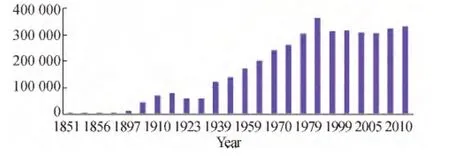
Fig.2 Variation in urban poulation,city of Chita.
In the second half of last century in Chita manufacturing enterprises of regional and national significance where worked up to 2~5 and more thousand people were built and fuctioned.There areas were reaching several square kilometres and utilizable technologies were defining thermal,chimical and mechanical permafrost pollution.It leaded to the development of mass civil engineering works.Urban density of Chita area as well as transport structured essentially differed in different administrative districts.Throughout Chita area urbanization anthropogenous,technical and natural factors changing against global climate change made synchronous impact on parameters of the geological and geocryological permafrost environment(distribution, structure,power,hydrosphere characteristics,temperature mode and engineering-geocryological properties).Here,we use the term"geological environment" (GE)as defined by E.M.Sergeev and V.T.Trofimov to denote the zone of the lithosphere affected by the technical environment;the term"geocryological environment"(GCE)is used to refer to the part of the geological environment which has subzero temperatures and contains ice.
The anthropogenic and technical pressure reached the maximum values at the end of the last century and resulted in reduced,often unpredictable,bearing capacity of foundation soils,aggravated ecological situation,and deteriorated construction sites in the Chita area.
Many distinguished scholars contributed to the understanding of the formation and dynamics of geological and geocryological environments for safe functioning of natural-technical systems(NTS).Fundamental and,in many respects,applied problems were investigated by Sergeev E.M.,Trofimov V.T.,Melnikov P.I.,et al.and many others who considered GE and GCE as integral parts of the natural environment.Their studies helped develop the methodological and methodical principles for urban GE and GCE studies,as well as gain a general understanding the dynamics of engineering-geological and geocryological processes affecting the efficiency and ecological safety of NTS.However,our understanding of the dynamics and transformation of GE composition,structure,and properties in response to climate change and anthropogenic loading,as well as of the engineering and ecological effects of GCE changes in the urban areas of the northern permafrost zone is still inadequate.Of significant importance for stable and environmentally safe NTS operation is to understand the pathways and rates of pollutant transport and accumulation in degrading GCE.The purpose of this study is to reveal the changes in GCE composition,structure and properties in relation to climate change and technogenic loading,as well as to development measures to ensure engineering and ecological safety of NTS functioning in the urban area of the southern permafrost zone(by the example of Chita).
1 Materials and methods
Materials for the writing of this work are given in the process of research within the Project of fundamental research of permafrost Institute‘Cryogenic and physico-chemical processesoffreeze and thawing grounds,their impact on the formation and development of permafrost natural-technical systems in conditions of climate change and technogenic loading’; Government Natural Resources Ministry contract of ZabaykalskyKrai‘Geological environmental studies in the Chita area with the purpose of anthropogenic impact estimation on the environment’,Fiscal topics of Transbaikal State University‘Anthropogenic impact estimation on the geo-ecological conditions of the urbanized areas of southern permafrost(by the example of Chita)’and‘Anthropogenic impact estimation on the geological environment of the urbanized areas of southern permafrost in conditions of global climate change(by the example of Chita)’.
It is known that the thickness of geological environment is changed depending on man impact on lithosphere.At the present time its lower border is mainly in depths of the first hundred meters.By way of exception(deep-hole drilling)can reach 10 and more kilometers.If exclude from consideration mine engineering constructions and take into account only civil and land line structures the thickness of geological environment of the urbanized areas won't exceed the first dozen meters[1].
Change in GC thickness is caused not alone by the depth of thermal and mechanical interaction of technical objects on soil massive but terrain change in the process of natural-engineering factors impact.If constrict the problem of urbanization impact on the geocryological environment(GCE)to the scale of technical object then the interaction of technical object(operating by technical laws)and the volume of permafrost massive(developing under the laws of nature)usually lead to the formation of natural and technical(areal,linear,etc.).In the engineering-geological literature the term NTS and the term GTS(geo-technical system)are often used as the synonyms[2]that is not completely correct.
Geotechnical system(GTS)has the boundaries which situation is strictly determined by the interaction of engineering structure on the geological environment.The similar content has the term‘lithotechnical system’(LTS).In this case,these notions are synonymous.However,natural-technical system is a much wider notion.It consists of engineering structure and all the natural spheres being under its influence and that is why GTS and LTS are subsystems(parts)of NTS[2-4].
At the analysis of urbanization impact on the composition,structure and soil properties change of the geocryological environment we started not generally from the geocryological environment change but about the natural-technical systems change of the urban environment‘NTS UE’that was the object of our research.Within the NTS UE we marked functional areas–settlement,industrial,agricultural and recreation areas.In turn in each of functional areas natural-technical systems of the second stage which elements were engineering structures and their soil foundations were marked.
GTS boundary is usually determined taking into account the definitive massive change of soil foundations under the influence of technical structure providing its stability.Such boundary is usually named‘homeostatic’[2].Within the urbanized area the homeostatic boundary of NTS UE aligns with the city boundary.In the meantime the location of the NTS boundaries of the second stage depends not only on the type and peculiarities of the technical system functioning but also on the change of the most dynamic environment parameters(air temperature,quantity and precipitation structure during a year:solid,liquid,etc.).Therefore,homeostatic NTS boundary of the second stage must determine taking into account operating time of engineering system and corresponding subject to the peculiarities of parameters change of climate rhythm pre-configurating the dimension of safety area of the engineering system operation.On this basis in the geotechnogenic soil masses it is to emphasize not home-ostatic boundaries but homeostatic areas the existence and dynamic of properties development of which assures effective and safety engineering structure functioning.The dimensions of homeostatic areas we were settling using existing analytical models of thermal analysis and we were improving them using mine opening.According to practice within each NTS of the second stage two such areas are formed:the first one– the massive of cryogenic environment which properties transformation is marked by the extensive factors(composing the structure of radio-thermal balance),the second one is near-contact zone feeling the impact of thermal and mechanical loading from technical objects.
The main elements of any NTS type structure are physiographic environment(PGE–atmosphere,biosphere,hydrosphere),cryogenic environment(CE–seasonal and permafrost)and technical environment (EE-structure type)(Fig.3).
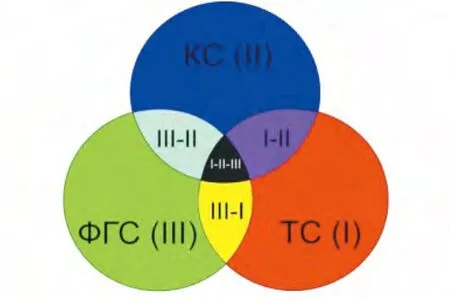
Fig.3 Object research structure of natural-technical system of the urban environment(NTS UE)Finite parameters sets characterized the state of every environment irrespectively from each other:EE(Ⅰ)– technical environment; CE(Ⅱ)–cryogenic environment;PGE(Ⅲ)-physiographic environment.Finite parameters sets characterized the subsystems of natural-technical system:Ⅲ-Ⅰ,Ⅲ-Ⅱ,Ⅰ-Ⅱ.Finite parameters sets characterized the functioning of natural-technical system -Ⅰ-Ⅱ-Ⅲ.
Thus,the systems approach,widely used in organization and implementation of large-scale transformation research of geocryological systems[4-7],was a methodological basis in this study.
The main research methods were theoretical,experimental(laboratory and natural)and cameral methods.Application of theoretical methods was directed on establishment of change regularities of GCS and their impact on the NTS elements,experimental– on the obtaining of the quantitative and qualitative information characterizing structure changes,a structure and GCS properties,cameral-on drawing up the GCS cartographical models in the urbanized Chita area.
Elaboration and assessment of the accuracy(reliability)of results of long-term experimental studies were carried out with usage of modern computer aids,were based on the application of theoretical fundamentals of mathematical massive statistics of the engineering-geological,geocryological and hydrogeological information made by results of monitoring research of environment change in the urbanized area.
2 Results and discussion
The orientation of parameters change of GCS structure in the course of areas urbanization is caused by integral impact of natural climate change and influence on geocryological conditions of technical loading.Allocated three stages of various intensity urbanization which time is synchronized with three periods of climate change towards its warming,caused since 1890 and until the present reduction of GCS area according from 70% ~80%to 20% ~30%,and thickness–from 30~50 m to 5~10 m.
Permafrost urbanization history and formation of geocryological environment are intimately connected with change of climatic conditions.Chita urbanization where change of climatic parameters defining necessary (negative long-term average annual air temperature values)and sufficient(existence of negative long-term average temperature on the base of seasonally thawing soil layer-STS)living conditions of the geocryological environment(GCE)is not the exception.Trend analysis of a curve of long-term mean air temperature variations in Chita shows the existence of three accurately expressed periods of its change(Fig.4).
With growth of urban areas,improving of construction methods,industrial development etc.the impact of urbanization on the near-surface air temperature,the precipitation amount and distribution in space and time has significantly increased.The impact of thermal pollution on changes in properties and structure of geocryologicalenvironmenthasalso increased.Hereinafter the term thermal pollution of geocryological environment will mean a heat sink from buildings and constructions directly into the geocryological environment(intensive effect)and the effect of technical environment by changing the parameters,which are a part of radiation-thermal balance structure at the upper boundary of geocryological environment(extensive effect)determining the upper boundary conditions of the geocryological environment existence.
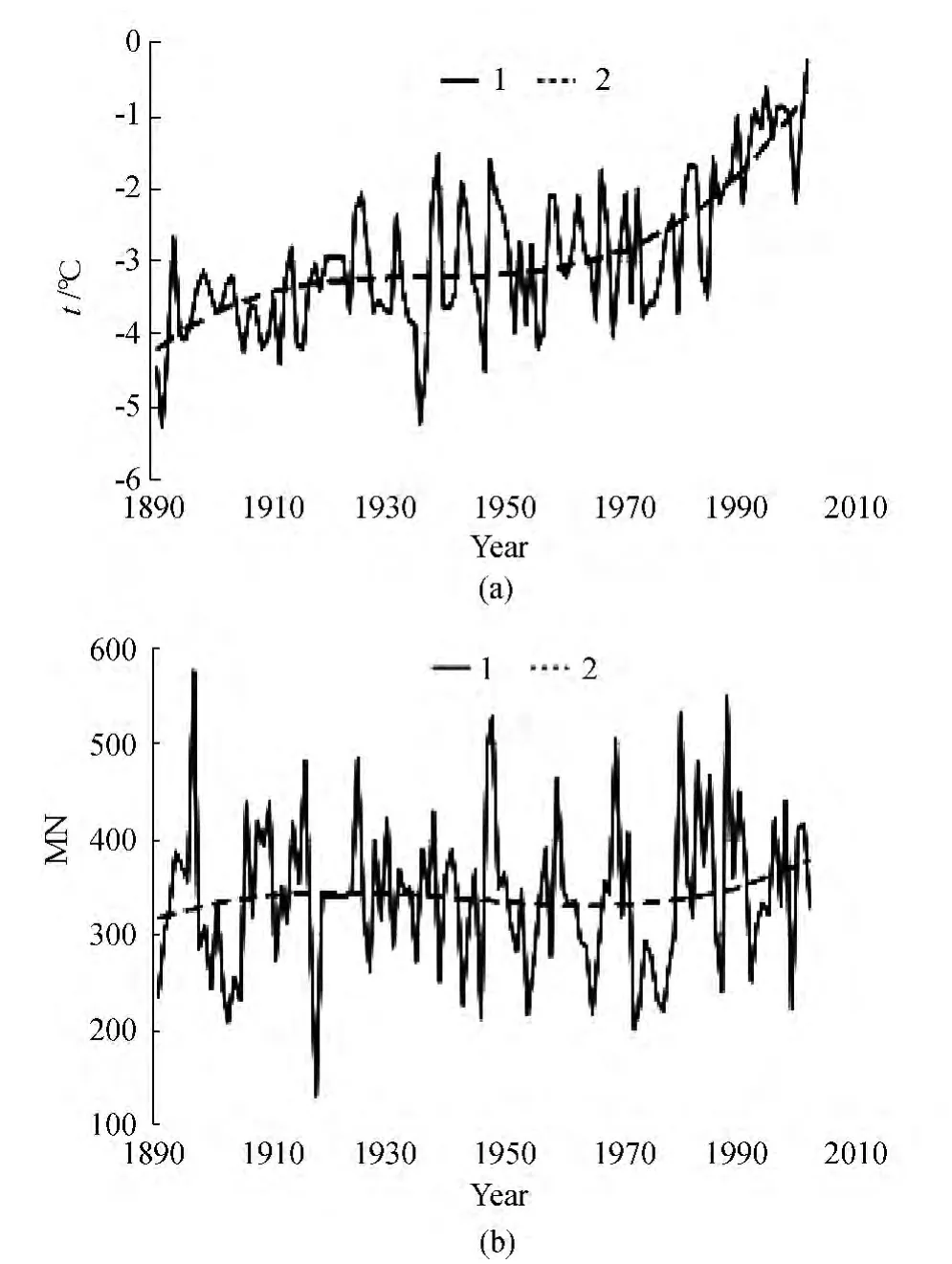
Fig.4 Variation in mean annual air temperature/℃(a)and precipitation/mm(b)in 1890~2010 (data from Chita weather station)1–variation in mean annual values;2–trend.
The first urbanization phase lasted 36 years(1890~1926).It began with the construction of the Trans-Siberian Railway and ended with the beginning of operation of first natural-technical systems(NTS),namely,"Railway shops of Chita" and "Chernovsk mines".The population of Chita during this period grew from 12 to 64 thousand people.A considerable total effect within the natural-technical system on the geocryological environment was noticeable.The average annual air temperature,precipitation amount and structure as well as thermal pollution(intensive and extensive)increased.It caused an increase in thickness of the active layer in geocryological environments of sandy-loamy types up to 15%and in loamy ones up to 10%.An albedo decrease(due to surface blackening around the natural-technical system),caused an increase in thickness of the active layer up to 20%and 15%,respectively.At this urbanization stage the pollution sources of the geocryological environment were local and intended to be used only for technical and geocryological environment.They did not cause a significant impact on operational parameters of the natural-technical system.
The second stage(1926~1960)is characterized by the beginning of a large-scale development of Chita and building of low-rises.The population of the city during this period grew to 170 thousand people.During this period,residential,industrial,recreational,agricultural zones and transport connections within the city (natural auto-roads)were formed.Number of boiler stations which used brown coal for heating increased to 10 000.The systematic urbanization determined the differentiation in formation and transformation of the geocryological environment.At this stage,particular buildings and structures,residential and industrial areas did not form a general system of transformation of geocryological environment of urbanized area.However,some local transport lines(surface and underground),which were used to transport chemical and mechanical contaminating materials had already been formed in the industrial area.For example,a degradation of geocryological environment was observed outside the territory of the"Chernovsk mines"natural-technical system(Fig.5)as a result of many factors such as mine dewatering etc.
The third stage of urbanization(1960-the present)is divided into two periods on a background of intensive increase in annual average air temperatures and precipitation amount(Fig.1).The first one(1960~1995)was characterized by a rapid growth of exten-sively developing industrial and residential zones.The second one(1995-the present)was notable for an almost complete stagnation of industrial zone functioning,except a heat and power complex,and increase in density and number of stories of new and already existing residential built-up areas.

Fig.5 The main stages of geocryological environment transformation during the process of urbanization and climate changing
New NTSs of mechanical-engineering,transport,construction,heat and power,food and light industries were established and were functioning during the first period.This fact caused an intensive population growth and extension of compactly built-up residential zones in certain districts.Thus,urbanization of the territory of Chita by this time had taken an agglomerative form and the population grew to 362.5 thousand people.All this contributed to the fact that the microclimate of industrial and residential areas of Chita was changed to a considerable degree and industrial-civil and hydraulic structures became the sources of intensive thermal pollution.As a result,the geocryological environment of foundations of some buildings in"Zenitka"district,which had been built using the Principle I,degraded causing development of intolerable deformation.The thermal pollution intensity is being observed during operation of the hydro-ash disposal area at the CHP plant-1.Dumping of warm wastes caused a complete degradation of geocryological environment during several years and its transition to a post geocryological environment.During this period of intensive urbanization the geocryologicalenvironmentwithin the city limits changed its boundaries and structure significantly.As a result,its area was reduced from 70%to 15% ~20%(Fig.2).
The stagnation of industry and increase in residential zone density did not stop further degradation of the geocryological environment.An impact on the geocryological environment and permafrost in general increased to a considerable degree due to its significant degradation during the previous period and an increase in mancaused impact on the underground hydrosphere.A transformation of filtration flow hydrodynamic structure occurred during sampling of underground waters.The hydro-ash disposal area at the CHP plant has a negative effect on groundwater quality and thermal state of geocryological environment.General pollution of the post geocryological environment extending in southeastern direction covers 10~12 km2.During this period, a cone of depression with a varying area of 72~93 km2and a dynamic level depth of 60~80 m was formed on the urban area.Ground waters sampling and geological environment pollution during this urbanization stage taking into account climate and microclimate condition change(building density increase)played a major role in structure and condition changes of the geocryological environment and permafrost degradation in residential and industrial zones of Chita.
Formation of features and regularities of changes in soil structure and properties of geocryological environment at different urbanization stages is determined by magnitude and kinetics of extensive(external)and intensive(internal)factors.First factors affect the parameters of the upper boundary conditions of heat transfer by changing the values in the structure of radiation-thermal balance.Second factors affect the intensity and spread of thermal and chemical pollution in space and time during construction and operation of the NTS.
The influence of NTS on geocryological and geological environments can cause the following main effects:natural landscape changes;changes almost in all major parameters of urban atmosphere;formation of a specific urban hydrosphere characterized by an impact of technical systems on groundwater regime and changes in the regime of surface watercourse and water bodies with urban runoff.
The factors(or impacts)on the environment of Chita are following:geographical and climatic features of the basic life-supporting geosphere shells;hydrographic characteristics of the city territory with main stream,watershed and closed waters zones;engineering-geological conditions of the city,including the development of dangerous geological processes.
The technical and natural environment is the main elements of the system.We mean by natural factors climatic,geological,geomorphological,permafrost,hydrogeology and geodynamic conditions.Permafrost environment,on the one hand,is strongly affected by transformations due to global climate change,and on the other hand,it is the basis or enclosing environment for most municipal objects-building foundations,underground utility systems(Table 1).The impact of urbanization(under other equal conditions)for each district during the period started with the beginning of intensive urbanization to the present is presented.
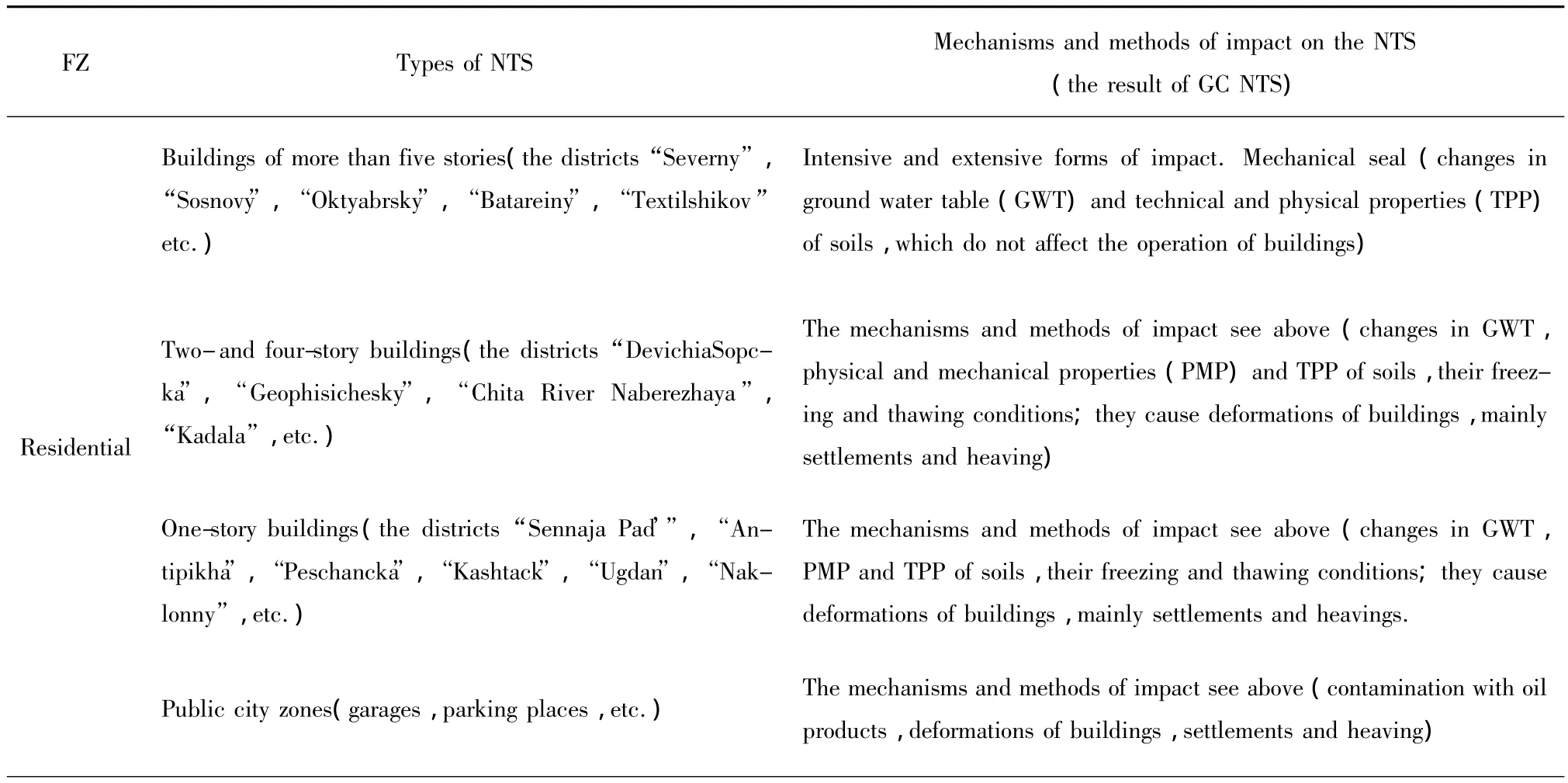
Table 1 Changes in the geocryological environment and the main types of NTS functional zones(FZ)of Chita

Continued table 1
We identified 23 districts with similar environmental conditions on the basis of landscape-botanical and geocryological zoning in the central part of the urbanized area(lacustrine-alluvial plain),7 districts on the north-western mountain sides(Chersky Range)and 13 districts on the south-eastern mountain sides(Yablonoi Range)(Fig.6).The estimation of integral influence of polluting factors complex using developments of the Permafrost Institute and the Department of Geocryology (Moscow State University)made it possible to differentiate quantitatively the effect of urbanization and global climate change on changes in seasonal soil thawing and freezing types[7].
By thermal pollution of environment we mean an impact of any substance or physical field,the influence of which exceeds amount or average natural background during fixed time.Taking this into account,the beginning of an intensive thermal pollution in the urbanized area of Chita has started since the 1960's.
It turned out,that the geocryological environment covered up to 70% of the lacustrine-alluvial plain at the beginning of this period.
Currently we have another situation.In the first case the area of geocryological environment decreased to 20%,in the second and third one the geocryological environment has almost completely transformed into the post geocryological environment within the city of Chita.Currently it refers to degraded permafrost.The area was reduced from 70%to 15% ~20%.In the areas where it was characterized by a continuous development type is currently presented by a residual thaw layer,i.e.the seasonally thawed later of geocryological environment soil transformed to a seasonally frozen type (Fig.3 a,b,c).Changes in the geothermal field of permafrost,caused by intensive thermal pollution of air,surface and underground hydrosphere and changes in background values of major climatic parameters(air temperature and precipitation amount)in the hard and liquid state were the causes that contributed to the radical permafrost transformation.These changes caused transformations of polluting agents transportation and deterioration of environmental conditions of Chita.Thermal pollution of cryogenic environment was the main reason caused a full transition of geocryological environment to a post geocryological environment.As a result,drainage was significantly increased and drinking water supplying systems were contaminated by previously accumulated agents.The presence of specific components in technogenic waters caused an increase in mineralization,sulfates and iron contents,and hardness in water of the Lower Cretaceous aquifers.
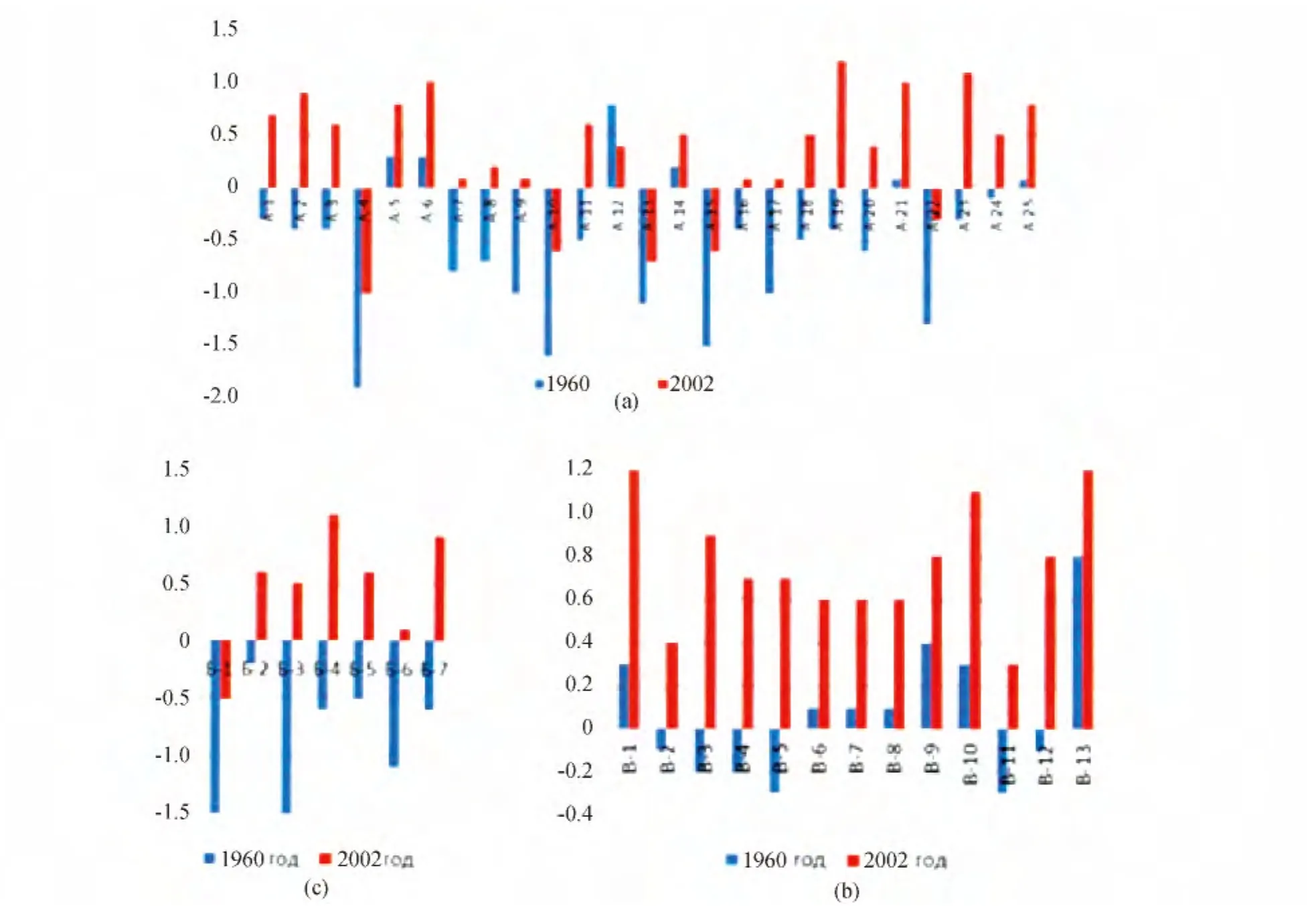
Fig.6 The estimation of thermal pollution impact on changes in the mean annual temperature of the active layer base during the second half of the 20th-the beginning of the 21st centuries within the urbanized city limits(a)lacustrine-alluvial plains;(b)the north-western mountain sides of the Chersky Range;(c)the north-western mountain sides of the Chersky Range.
The efficiency of NTS operation and environmental safety in urban areas of southern permafrost regions can be reached by engineering-geological monitoring taking into account climate change and man-caused load.
A theoretical basis for control of changes in permafrost conditions was developed by Kudryavtsev and Yershov[8].Technical solutions are widely used for the efficient operation of linear structures within the southern permafrost region.Takinginto account these works,a complex of measures regulating heat exchange in the NTS of the urbanized areas was developed.The first group of measures regulates the external heat exchange in the geocryological environment by changes in parameters of radiation-thermal balance.This group includes two systems of measures:measures affecting the proportion of ingredients for radiation balance,and measures affecting heat balance.The second group of measures is used to control heat exchange in geocryological environment changing the composition and properties of its soils.The recommended measures allow changing the composition of organic-mineral soils,their moisture conditions and regulating soil heat and mass exchange by changing the soil properties and thermal conditions without significant changes in their material composition.The third group of measures is oriented to transform soils of the geocryological environment using additional natural and artificial heat sources and heat sinks(Table 2).
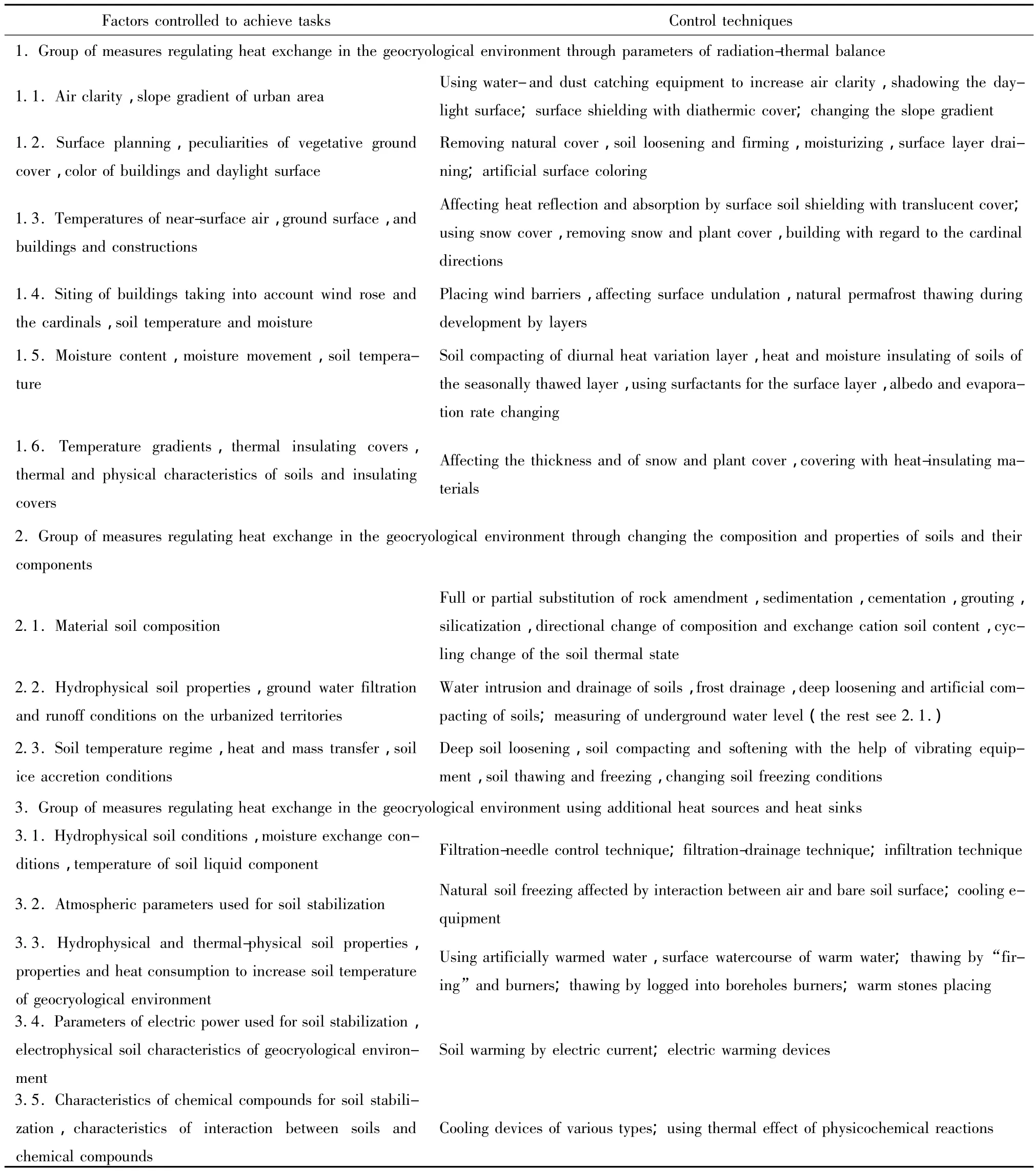
Table 2 Classification scheme of control measures of engineering-geocryological processes[8]adapted for urbanized areas of southern permafrost region
An engineering-geological zoning of Chita area was performed based on complex of factors slowing down the process of large-scale development of the city.The following elements forming the geocryological environment were identified as the basic ones:land relief;geological structure;groundwater;permafrost; geological, engineering-geological, and cryogenic processes and phenomena.The zones of geocryological,geological and post geocryological environments are divided into three groups(A,B,C)based on their relevance for planning and construction.Each group is highlighted(Fig.7).A-green(perfect areas for construction of any type without restrictions),B-yellow(areas requiring a significant site preparation and underpinning measures)and C-orange(areas requiring a high-priced site preparation and continuous urban development is economically unviable).

Fig.7 Distribution of territories based on conditions for building within administrative areas(AA)of the natural-technical system of Chita1-Central(AA-1);2-Ingodinsk(AA-2);3-Railway(AA-3); 4-Chernovsk(AA-4).
At the same time,zones corresponding to the administrative areas(AA)of Chita are identified within each of the highlighted areas.It should be noted,that the administrative areas of Chita significantly differ from each other in territory.The territory of the Chernovsk district is 266.82 km2,of the Ingodinsk,Central and Railway ones is 131.00 km2;83.76 km2and 52.42 km2respectively.Each of these districts is considered to be a subsystem of the NTS mostly due to differences in natural conditions and peculiarities of geocryological environment formation.The performed geotechnical zoning of Chita shows that 20%of the area is suitable for any kind of building without any restrictions;33%-suitable with some restrictions caused by permafrost development as well as the presence of slopes more than 8~12 degrees;23%of the city territory are problematic for building.Selecting the control measures is strictly individual and they should be chosen in each case depending on the conditions of the geocryological environment,features of the NTS functional zones and the application effectiveness.A high application effectiveness of geocryological and geological environments can be achieved only through continuous state estimation and control.If it is necessary,other administrative decisions to ensure environmental safety of the city should be taken.To solve this problem,it is necessary to organize with the help of the Transbaikal State University and PLC"Zabaykal TISIZ"a multi-functional continuous multileveled monitoring on the territory of the Chita City District.
3 Conclusions
Thus,the research conducted made it possible to solve an actual research and practice task concerning the identification and estimation of urbanization and global climate change impacts on changes in geocryological environment of the southern part of the permafrost region.As a result:
1)The urbanization stages of different intensity have been identified,the duration of which was synchronized with periods of climate warming.Geocryological conditions of each stage and parameter change in structure of the geocryological environment have been analyzed and established.
2)The impact of key environmental factors on temperature and thickness formation of the seasonally thawed and seasonally frozen soil layers at different stages of urbanization has been estimated.Reduction of permafrost area from 70%to 15% ~20%has been registered.In the areas where it was characterized by a continuous development type is currently presented by a residual thaw layer,i.e.the seasonally thawed later of geocryological environment soil had transformed to a seasonally frozen type.
3)Specific features of structure and properties of the geocryological environment within the functional zones of Chita have been established according to types and technologies of functioning natural-technical systems.The control techniques of engineering-geocryological processes in urbanized areas of the southern permafrost region have been adapted.
4)Engineering-geocryological zoning of Chita has been performed,engineering-geocryological conditions within each administrative area have been estimated.
5)Measures to ensure the technical and environmental safety of geocryological environment,taking into account the peculiarities of its changes under the influence of urbanization,climate change and increase in intensity of man-caused impact have been developed.
6)Research techniques and the results obtained can be used to provide technical and environmental safety of natural-technical systems,to develop control measures preventing dangerous cryogenic processes and phenomena under the conditions of geocryological system degradation within the southern permafrost region.
[1] Sergeev E M.Engineering geology-the theory of geological environment[J].Inzhenernaya Geologiya,1979,1:1-9.
[2] Korolev V A.Geological Environment Monitoring[D].Moscow: Moscow State University,1995.
[3] Revzon A L.Mapping of Geotechnical Systems States[M].Moscow:Nedra,1992.
[4] Shesternev D M.Basic principles of geocryological monitoring at linear structures(with reference to the Berkakit-Tommot-Yakutsk Railway).In:Zhang RV(ed)[A].Permafrost Engineering,Proceedings of the IX International Symposium[C].Mirny: Melnikov Permafrost Institute SB RAS Press,2011:253-260.
[5] Shur Y L.Near-Surface Permafrost and Thermokarst[M].Novosibirsk:Nauka,1988.
[6] Shesternev D M.Cryohypergenesis and Geotechnical Properties of Permafrost Materials[M].Novosibirsk:SB RAS Press,2001.
[7] Shesternev D M,Vasyutich L A.Thermal pollution of the permafrost geological environment of Transbaikal urbanized areas(on the example of Chita)[M].Vestnik:ChitGU,2012,1(80):43-51.
[8] Kudryavtsev V A,Ershov E D.Principles of permafrost processes control[J].Permafrost Research,1969,2(9):147-158.
[9] Melnikov P I,Kamensky R M,Pavlov A V.Permafrost Monitoring[J].Vestnik RAN,1993,63(12):1 090-1 095.
[10]Vasyutich L A.Studies of the effect of human impact on drinking water quality in urbanized areas(on the example of Chita).Complex Hydrology Tasks:Scientific Conference abstract[A].Petersburg University,St.Petersburg,2011:39-41.
[11]Yepishin V K,Trofimov V T.Peculiarities of the interaction between geological environment and engineering constructions[J].Socio-Economic Aspects,1985,32-36.
